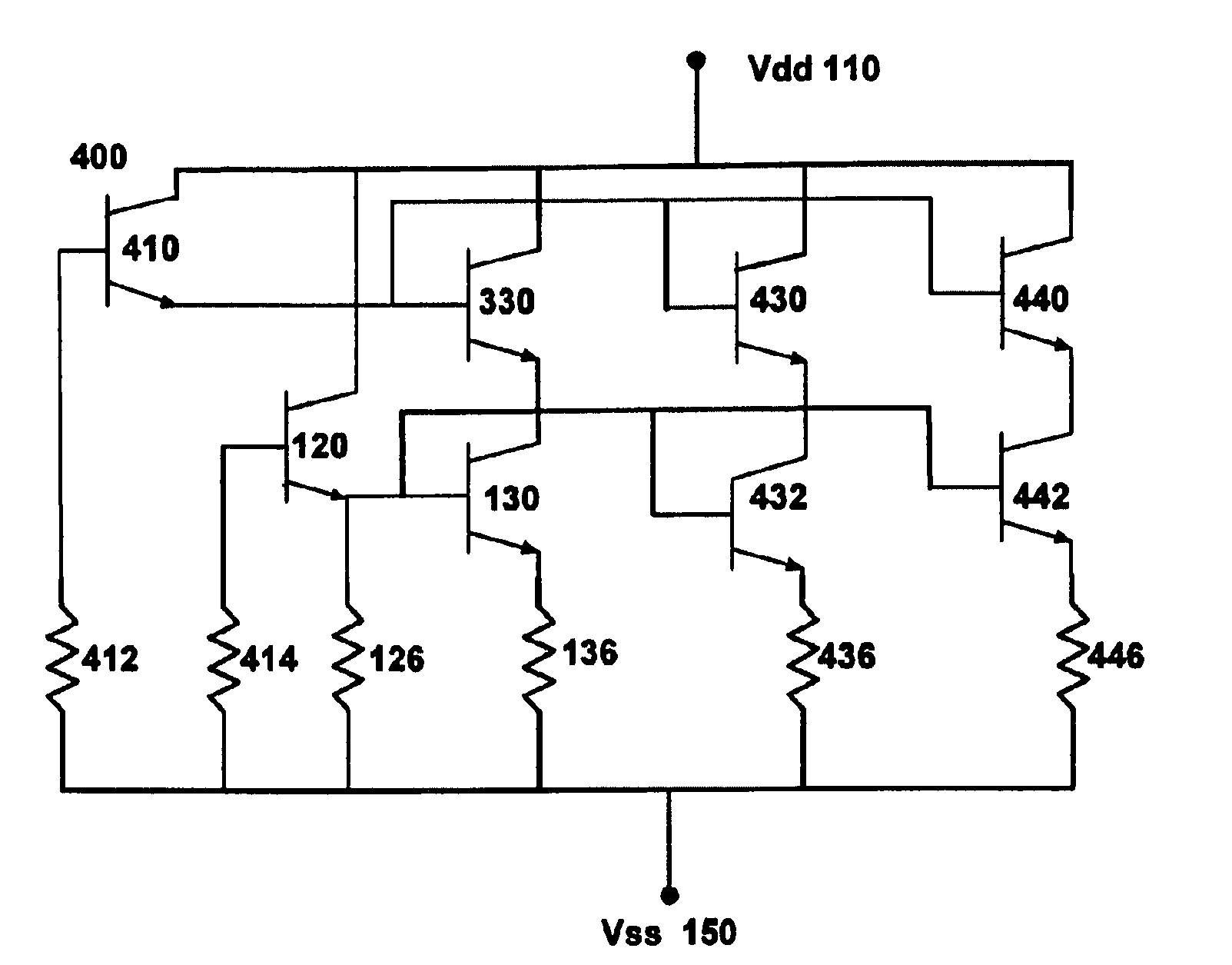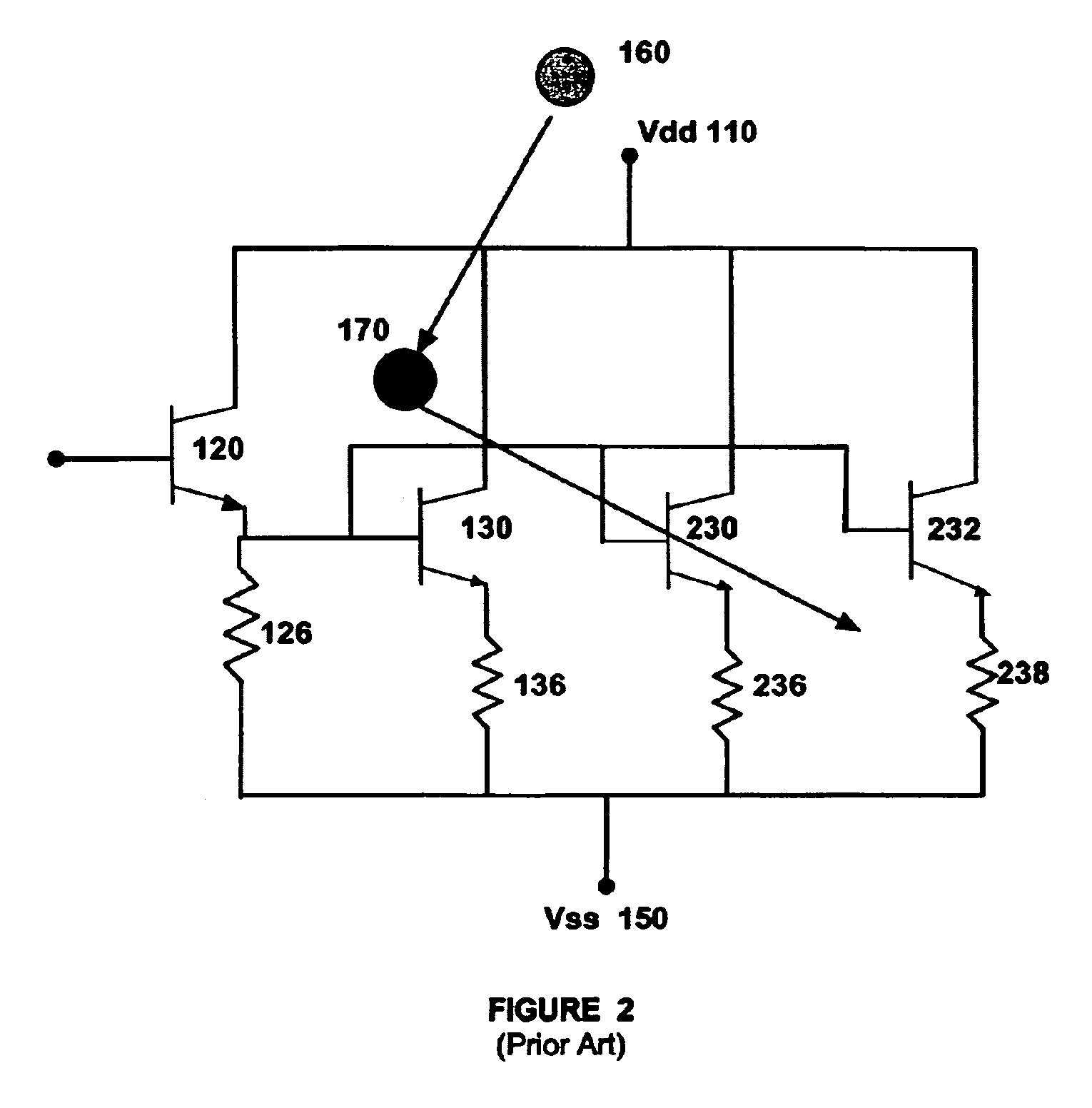Radiation tolerant electrostatic discharge protection networks
a technology of protection network and electrostatic discharge, which is applied in the direction of radiation hardening, pulse technique, transistors, etc., can solve the problems that the electrostatic discharge network poses a hazard to the integrity of the circuitry in spa
- Summary
- Abstract
- Description
- Claims
- Application Information
AI Technical Summary
Benefits of technology
Problems solved by technology
Method used
Image
Examples
Embodiment Construction
[0022]As discussed earlier, the collision of heavy ion particles often leads to secondary breakdown events in space caused by high energy protons and neutrons colliding with the silicon lattice of electronic circuits leading to fission fragments and damage to the electronic devices. Electrostatic discharge networks (ESD) can be used to quickly remove power from a circuit resulting from bombardment by cosmic rays but when the ESD network itself is hit, then catastrophic failure may occur because of excessive heat, or metallization or bond failure. Bipolar-based ESD networks, moreover, actually fail in space applications. Hereinafter the distinction between SEUs, SELs, and SEBs shall be merged and the event, whether it be a latch-up or a burn-out, shall simply be referred to a single event upset (SEU). Until now, the failure of ESD networks in space from SEUs has not been addressed.
[0023]FIG. 1 is a schematic of a prior art silicon germanium power clamp 100 that limits the current in ...
PUM
 Login to View More
Login to View More Abstract
Description
Claims
Application Information
 Login to View More
Login to View More - R&D
- Intellectual Property
- Life Sciences
- Materials
- Tech Scout
- Unparalleled Data Quality
- Higher Quality Content
- 60% Fewer Hallucinations
Browse by: Latest US Patents, China's latest patents, Technical Efficacy Thesaurus, Application Domain, Technology Topic, Popular Technical Reports.
© 2025 PatSnap. All rights reserved.Legal|Privacy policy|Modern Slavery Act Transparency Statement|Sitemap|About US| Contact US: help@patsnap.com



